Table of Contents
<!-- Template Revision 1.4 beta (HTML comment will not display, it's not needed to remove them. For Template/Skeleton changes, increase Template Revision number. So we can check faster, if the TRM style is up to date) --> |
Download PDF version of this document. |
Table of Contents |
Refer to "https://shop.trenz-electronic.de/en/Download/?path=Trenz_Electronic/TE0803" for downloadable version of this manual and the rest of available documentation. |
The Trenz Electronic TE0803 is an industrial-grade MPSoC SoM integrating a Xilinx Zynq UltraScale+, max. 8 GByte DDR4 SDRAM with 64-Bit width data bus connection, max. 512 MByte SPI Boot Flash memory for configuration and operation, up to 8 Gigabit transceivers and powerful switch-mode power supplies for all on-board voltages. A large number of configurable I/O's is provided via rugged high-speed stacking connections.
All this in a compact 5.2 x 7.6 cm form factor, at the most competitive price
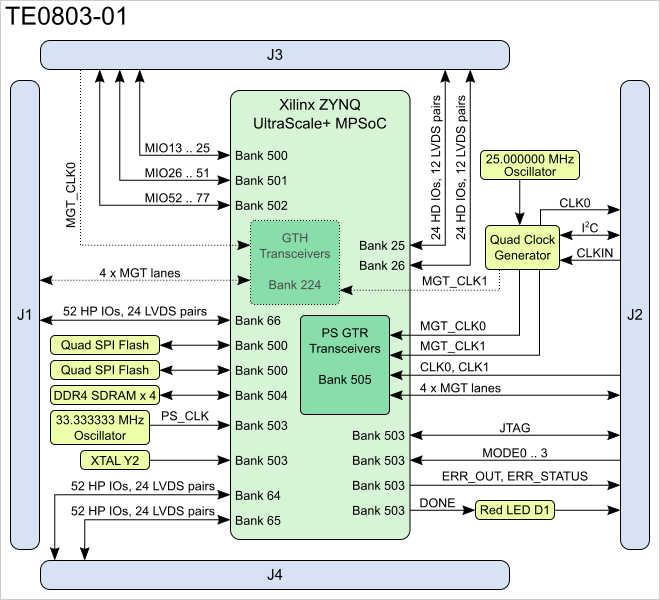
Figure 1: TE0803-01 Block Diagram

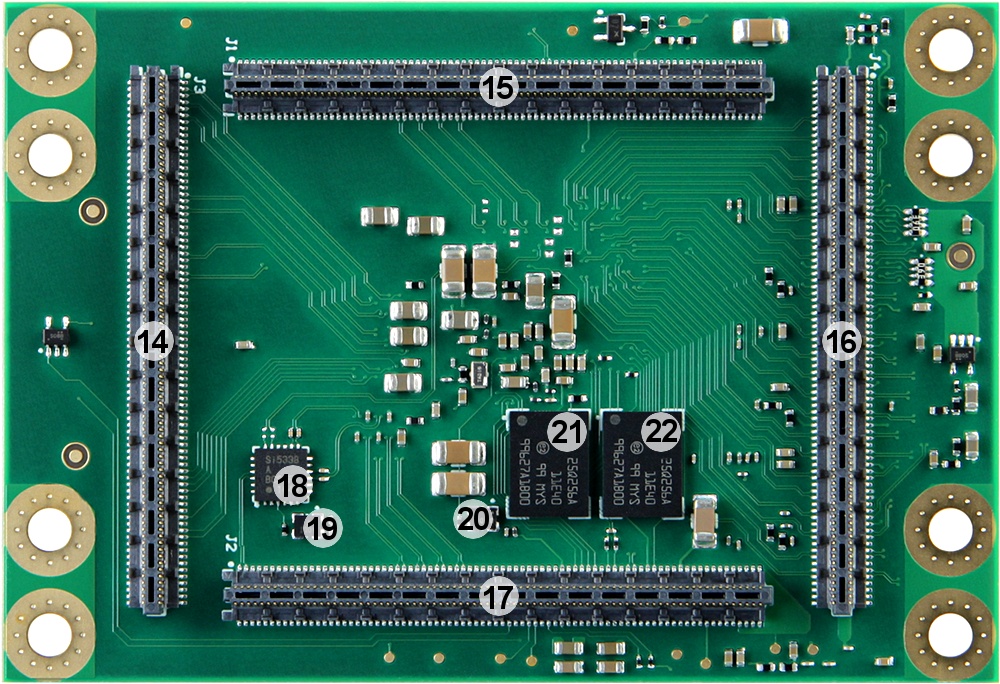
Figure 2: TE0803-01 MPSoC module
| Storage device name | Content | Notes |
|---|---|---|
User configuration EEPROMs with MAC address (1x Microchip 24LC128-I/ST, 3x Microchip 24AA025E48T-I/OT) | Not programmed | available since PCB REV02 |
SPI Flash main array | Not programmed | - |
eFUSE Security | Not programmed | - |
| Si5338A programmable PLL NVM OTP | Not programmed | Only volatile memory is programmable of field. NVM can't be program on field. Custom assembly variant with preprogrammed NVM is possible on request |
Table 1: Initial Delivery State of the flash memories
The TE0803 MPSoC SoM has four Board to Board (B2B) connectors with 160 contacts per connector.
Each connector has a specific arrangement of the signal-pins, which are grouped together in categories related to their functionalities and to their belonging to particular units of the Zynq UltraScale+ MPSoC like I/O-banks, interfaces and Gigabit transceivers
or to the on-board peripherals.
Following table lists the I/O-bank signals, which are routed from the MPSoC's PL and PS banks as LVDS pairs or single ended I/O's to the B2B connectors.
| Bank | Type | B2B Connector | Schematic Names / Connector Pins | I/O Signal Count | LVDS Pairs Count | VCCO Bank Voltage | Notes |
|---|---|---|---|---|---|---|---|
251) | HD | J3 | B25_L1_P ... B25_L12_P | 24 I/O's | 12 | VCCO25 | VCCO max. 3.3V |
262) | HD | J3 | B26_L1_P ... B26_L12_P | 24 I/O's | 12 | VCCO26 | VCCO max. 3.3V |
| 64 | HP | J4 | B64_L1_P ... B64_L24_P B64_T0 ... B64_T3 | 52 I/O's | 24 | VCCO64 | VCCO max. 1.8V |
| 65 | HP | J4 | B65_L1_P ... B65_L24_P B65_T0 ... B65_T3 | 52 I/O's | 24 | VCCO65 | VCCO max. 1.8V |
| 66 | HP | J1 | B66_L1_P ... B66_L24_P B66_T0 ... B66_T3 | 52 I/O's | 24 | VCCO66 | VCCO max. 1.8V |
| 500 | MIO | J3 | MIO13 ... MIO25 | 13 I/O's | - | PS_1V8 | user configurable I/O's on B2B |
| 501 | MIO | J3 | MIO26 ... MIO51 | 26 I/O's | - | PS_1V8 | user configurable I/O's on B2B |
| 502 | MIO | J3 | MIO52 ... MIO77 | 26 I/O's | - | PS_1V8 | user configurable I/O's on B2B |
Table 2: B2B connector pin-outs of available PL and PS banks of the TE0803-01 SoM
1) Bank 25 at XCZU2 / XCZU3, else Bank 45 at XCZU4 / XCZU5
2) Bank 26 at XCZU2 / XCZU3, else Bank 46 at XCZU4 / XCZU5
All MIO banks are powered from on-module DC-DC power rail. All PL I/O banks have separate VCCO input pins in the B2B connectors, valid VCCO should be supplied from the carrier board.
For detailed information about the B2B pin-out, please refer to the Pin-out table.
The configuration of the I/O's MIO13 - MIO77 are depending on the base-board peripherals connected to these pins.
The B2B connectors J1 and J2 provide also access to the MGT banks of the Zynq UltraScale+ MPSoC. There are 8 high-speed data lanes (Xilinx GTH / GTR transceiver) available composed as differential signaling pairs for both directions (RX/TX).
The MGT banks have also clock input-pins which are exposed to the B2B connectors J2 and J3. Following MGT lanes are available on the B2B connectors:
| Bank | Type | B2B Connector | Count of MGT Lanes | Schematic Names / Connector Pins | MGT Bank's Reference Clock Inputs |
|---|---|---|---|---|---|
2241) | GTH | J1 | 4 GTH lanes (4 RX / 4TX) | B224_RX3_P, B224_RX3_N, pins J1-51, J1-53 B224_RX2_P, B224_RX2_N, pins J1-57, J1-59 B224_RX1_P, B224_RX1_N, pins J1-63, J1-65 B224_RX0_P, B224_RX0_N, pins J1-69, J1-71 | 1 reference clock signal (B224_CLK0) from B2B connector 1 reference clock signal (B224_CLK1) from programmable |
| 505 | GTR | J2 | 4 GTR lanes (4 RX / 4TX) | B505_RX3_P, B505_RX3_N, pins J2-54, J2-52 B505_RX2_P, B505_RX2_N, pins J2-60, J2-58 B505_RX1_P, B505_RX1_N, pins J2-66, J2-64 B505_RX0_P, B505_RX0_N, pins J2-72, J2-70 | 2 reference clock signals (B505_CLK0, B505_CLK1) from B2B connector 2 reference clock signals (B505_CLK2, B505_CLK3) from programmable |
Table 3: B2B connector pin-outs of available MGT lanes of the MPSoC
1) Bank 224 only available at XCZU4 / XCZU5 MPSoC.
JTAG access is provided through the MPSoC's PS configuration bank 503 with bank voltage 'PS_1V8'.
| JTAG Signal | B2B Connector Pin |
|---|---|
| TCK | J2-120 |
| TDI | J2-122 |
| TDO | J2-124 |
| TMS | J2-126 |
Table 4: B2B connector pin-out of JTAG interface
The Xilinx Zynq UltraScale+ MPSoC's PS configuration bank 503 control signal pins are accessible through B2B-connector J2.
For further information about the particular control signals and how to use and evaluate them, refer to the Xilinx Zynq UltraScale+ MPSoC TRM and UltraScale Architecture Configuration - User Guide.
| Signal | B2B Connector Pin | Function |
|---|---|---|
| DONE | J2-116 | PL configuration completed |
| PROG_B | J2-100 | PL configuration reset signal |
| INIT_B | J2-98 | PS is initialized after a power-on reset |
| SRST_B | J2-96 | System reset |
| MODE0 ... MODE3 | J2-109/J2-107/J2-105/J2-103 | 4-bit boot mode pins For further information about the boot-modes refer to the Xilinx Zynq UltraScale+ MPSoC TRM |
| ERR_STATUS / ERR_OUT | J2-86 / J2-88 | ERR_OUT signal is asserted for accidental loss of ERR_STATUS indicates a secure lock-down state |
| PUDC_B | J2-127 | Pull-up during configuration (pulled-up to 'PL_1V8') |
Table 5: B2B connector pin-out of MPSoC's PS configuration bank
The Xilinx Zynq UltraScale+ MPSoC provides differential pairs for analog input values. The pins are exposed to B2B-connector J2.
| Signal | B2B Connector Pin | Function |
|---|---|---|
| V_P, V_N | J2-113, J2-115 | System Monitor |
| DX_P, DX_N | J2-119, J2-121 | Temperature-sensing diode pins |
Table 6: B2B connector pin-out of analog input pins
Quad SPI Flash memory ICs U7 and U17 are connected to the Zynq PS QSPI0 interface via PS MIO bank 500, pins MIO0..MIO5 and MIO7..MIO12.
| MIO | U7 Pin | Pin Name | MIO | U17 Pin | Pin Name | |
|---|---|---|---|---|---|---|
| 0 | B2 | CLK | 7 | C2 | CS# | |
| 1 | D2 | DO/IO1 | 8 | D3 | DI/IO0 | |
| 2 | C4 | WP#/IO2 | 9 | D2 | DO/IO1 | |
| 3 | D4 | HOLD#/IO3 | 10 | C4 | WP#/IO2 | |
| 4 | D3 | DI/IO0 | 11 | D4 | HOLD#/IO3 | |
| 5 | C2 | CS# | 12 | B2 | CLK |
Table 7: MIO pin assignment of the Quad SPI Flash memory ICs
The boot source of the Zynq UltraScale+ MPSoC can be selected via 4 dedicated pins, which generate a 4-bit code to select the boot mode. The pins are accessible on B2B connector J2:
| Boot Mode Pin | B2B Pin |
|---|---|
| PS_MODE0 | J2-109 |
| PS_MODE1 | J2-107 |
| PS_MODE2 | J2-105 |
| PS_MODE3 | J2-103 |
Table 8: Boot mode pins on B2B connector J2
Following boot modes are possible on the TE0803 UltraScale+ MPSoC module by generating the corresponding 4-bit code with pins 'PS_MODE0' ... 'PS_MODE3' (little-endian alignment):
| Boot Mode | Mode Pins [3:0] | MIO Location | Description |
|---|---|---|---|
| JTAG | 0x0 | JTAG | Dedicated PS interface. |
| QSPI32 | 0x2 | MIO[12:0] | Configured on module with dual QSPI Flash Memory. 32-bit addressing. |
| SD0 | 0x3 | MIO[25:13] | Supports SD 2.0. |
| SD1 | 0x5 | MIO[51:38] | Supports SD 2.0. |
| eMMC_18 | 0x6 | MIO[22:13] | Supports eMMC 4.5 at 1.8V. |
| USB 0 | 0x7 | MIO[52:63] | Supports USB 2.0 and USB 3.0. |
| PJTAG_0 | 0x8 | MIO[29:26] | PS JTAG connection 0 option. |
| SD1-LS | 0xE | MIO[51:39] | Supports SD 3.0 with a required |
Table 9: Selectable boot modes by dedicated boot mode pins
For functional details see ug1085 - Zynq UltraScale+ TRM (Boot Modes Section).
The TE0803 SoM can be configured with max. 512 MByte Flash memory for configuration and operation. Flash size and type depends on assembly version.
| Name | Designator | PS7 | MIO | Notes |
|---|---|---|---|---|
| SPI Flash | U7 | QSPI0 | MIO0 ... MIO5 | Dual parallel booting possible, 32 MByte memory per Flash IC at standard configuration |
| SPI Flash | U17 | QSPI0 | MIO7 ... MIO12 | As above |
Table 10: Peripherals connected to the PS MIO pins
The TE0803-01 SoM is equipped with with four DDR4-2400 SDRAM chips with up to 8 GByte of memory. The SDRAM chips are connected to the Zynq MPSoC's PS DDR controller (bank 504) via 64-bit wide data bus.
Refer to the Xilinx Zynq UltraScale+ datasheet DS925 for more information, if the specific Zynq UltraScale+ MPSoC chip on module supports the maximum data transmission rate of 2400 MByte/s.
The TE0803 (PCB REV02 or newer) contains EEPROMs for general user purposes and mac address. The EEPROMs are provided by Microchip and all have I²C interfaces:
| EEPROM Modell | Schematic Designator | Memory Density | Purpose |
|---|---|---|---|
| 24AA025E48T-I/OT | U41 | 2 Kbit | user |
Table 21: On-board configuration EEPROMs overview
Following table illustrates on-board Si5338A programmable clock multiplier chip inputs and outputs:
| Input | Connected to | Frequency | Notes |
|---|---|---|---|
| IN1 / IN2 | B2B Connector pins J2-4, J2-6 (differential pair) | User | AC decoupling required on base |
| IN3 | On-board Oscillator (U6) | 25.000000 MHz | - |
| Output | Connected to | Frequency | Notes |
| CLK0 A/B | B2B Connector pins J2-1, J2-3 (differential pair) | User | Default off |
| CLK1 A/B | B224 CLK1 (only available at MPSoC with ZU4 and higher ) | User | Default off |
| CLK2 A/B | B505 CLK3 | User | Default off |
| CLK3 A/B | B505 CLK2 | User | Default off |
Table 11: Programmable PLL clock generator input/output
The Si5338A programmable clock generator's control interface pins are exposed to B2B connector J2. For further information refer to the Si5338A data sheet.
| Signal | B2B Connector pin | Function |
|---|---|---|
| PLL_SCL / PLL_SDA | J2-90 / J2-92 | I²C interface, external pull-ups needed for SCL/SDA line. I²C address in current configuration: 1110000b |
Table 12: B2B connector pin-out of Si5338A control interface
Si5338A NVM is not programmed by default at delivery. It is customers responsibility to either configure Si5338A volatile memory during FSBL or then use Silicon Labs programmer. Custom assembly variant with preprogrammed NVM is possible on request. |
Refer to Si5338A datasheet for more information.
The TE0803-01 SoM is equipped with two on-board oscillators to provide the Zynq MPSoC's PS configuration bank 503 with reference clock signals.
| Clock | Frequency | Bank 503 Pin | Connected to |
|---|---|---|---|
| PS_CLK | 33.333333 MHz | R16 | MEMS oscillator, U32 |
| PS_PAD (RTC) | 32.768 kHz | N17/N18 | Quartz crystal, Y2 |
Table 13: Reference clock-signals to PS configuration bank 503
| LED | Color | Connected to | Description and Notes |
|---|---|---|---|
| D1 | Red | DONE signal (PS Configuration Bank 503) | This LED goes ON when power has been applied to the module and stays ON until MPSoC's programmable logic is configured properly. |
Table 14: LED's description
The maximum power consumption of a module mainly depends on the design which is running on the FPGA.
Xilinx provide a power estimator excel sheets to calculate power consumption. It's also possible to evaluate the power consumption of the developed design with Vivado. See also Trenz Electronic Wiki FAQ.
| Power Input Pin | Typical Current |
|---|---|
| DCDCIN | TBD* |
| LP_DCDC | TBD* |
| PL_DCIN | TBD* |
| PS_BATT | TBD* |
Table 15: Maximum current of power supplies. *To Be Determined soon with reference design setup.
Power supply with minimum current capability of 3A for system startup is recommended. For the lowest power consumption and highest efficiency of on board DC/DC regulators it is recommended to powering the module from one single 3.3V supply. Except 'PS_BATT', all input power supplies have a nominal value of 3.3V. Although the input power supplies can be powered up in any order, it is recommended to power them up simultaneously.
The TE0803 module equipped with the Xilinx Zynq UltraScale+ MPSoC delivers a heterogeneous multi-processing system with integrated programmable logic and independently operable elements and is designed to meet embedded system power management requirement by advanced power management features. This features allow to offset the power and heat constraints against overall performance and operational efficiency.
This features allowing highly flexible power management are achieved by establishing Power Domains for power isolation. The Zynq UltraScale+ MPSoC has multiple power domains, whereby each power domain requires its own particular external DC-DC converters.
The Processing System contains three Power Domains:
The fourth Power Domain is for the Programmable Logic (PL). If individual Power Domain control is not required, power rails can be shared between domains.
On the TE0803 SoM, following Power Domains can be powered up individually with power rails available on the B2B connectors:
Each Power Domain has its own "Enabling"- and "Power Good"-signals. The power rail 'GT_DCDC' is only necessary for variants of the TE0803 module with the Xilinx Zynq UltraScale+ ZU4CG or ZU4EV MPSoC to generate the voltages for the available Xilinx GTH unit.
The power rails 'DCDCIN', 'LP_DCDC', 'PL_DCIN', 'PS_BATT' have to be powered up on the assigned pins of the B2B connectors as listed on the section "Power Rails". Except 'PS_BATT' (see section "Recommended Operation Conditions"), all power-rails can be powered up, with 3.3V power sources, also shared, if Power Domain control is not required.
There are following dependencies how the initial voltages of the power rails on the B2B connectors are distributed to the on-board DC-DC converters, which power up further DC-DC converters and the particular on-board voltages:
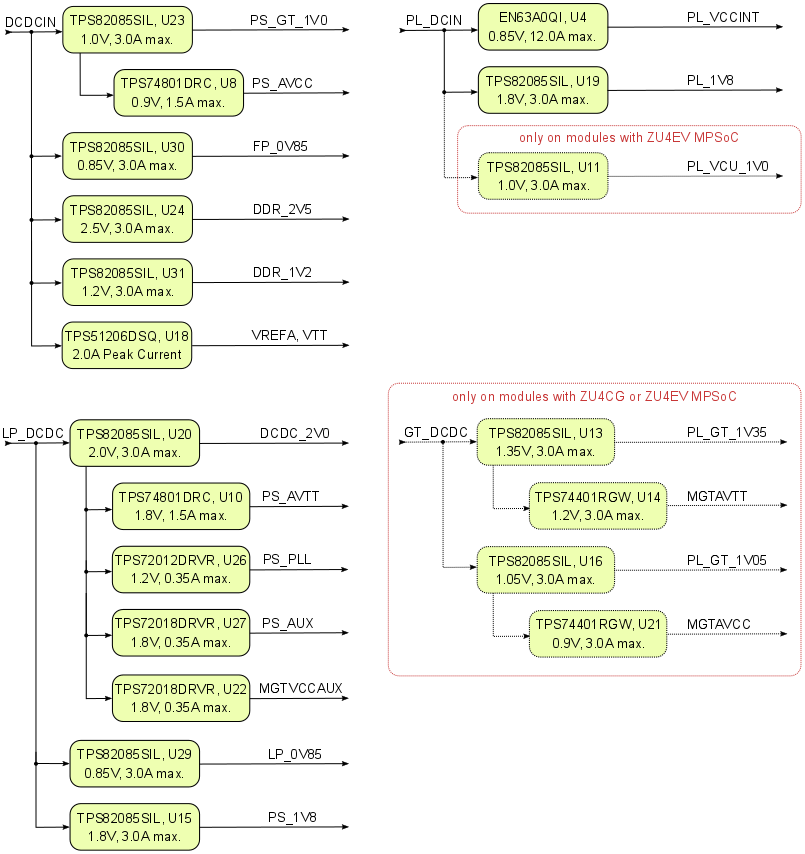
Figure 3: Power Distribution Diagram (For U4 either TPS548A28RWWR or MPQ8633BGLE-Z is assembled which is up to Trenz Electronic GmbH)
Current rating of Samtec Razor Beam LP Terminal/Socket Strip ST5/SS5 B2B connectors is 1.5 A per pin (1 pin powered per row). |
The TE0803 SoM meets the recommended criteria to power up the Xilinx Zynq UltraScale+ MPSoC properly by keeping a specific sequence of enabling the on-board DC-DC converters dedicated to the particular Power Domains and powering up the on-board voltages.
The on-board voltages of the TE0803 SoM will be powered-up in order of a determined sequence by activating the above-mentioned power rails and the Enable-Signals of the DC-DC converters. The on-board voltages will be powered up at three steps.
Hence, those three power instances will be powered up consecutively and the Power-Good-Signals of the previous instance has to be asserted.
Following diagram clarifies the sequence of enabling the three power instances utilizing the DC-DC converter control signals ('Enable', 'Power-Good'), which will power-up in descending order as listed in the blocks of the diagram.
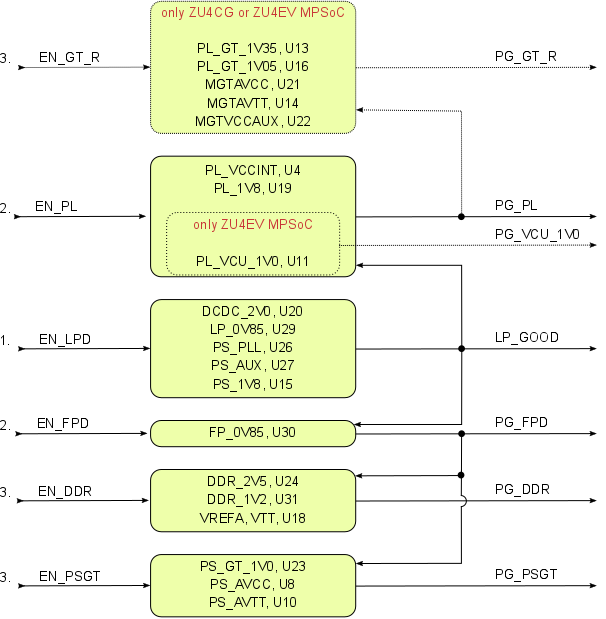
Figure 4: Power-On Sequence Utilizing DC-DC Converter Control Signals
The control signals have to be asserted on the B2B connector J2, whereby some of the Power Good Signals need external pull-up resistors.
| Enable-Signal | B2B Connector Pin | Max. Voltage | Note | Power-Good-Signal | B2B Connector Pin | Pull-up Resistor | Note | |
|---|---|---|---|---|---|---|---|---|
| EN_LPD | J2-108 | 6V | TPS82085SIL data sheet | LP_GOOD | J2-106 | 4K7, pulled up to LP_DCDC | - | |
| EN_FPD | J2-102 | DCDCIN | NC7S08P5X data sheet | PG_FPD | J2-110 | 4K7, pulled up to DCDCIN | - | |
| EN_PL | J2-101 | max PL_DCIN | Left floating for logic high (drive to GND for logic low) | PG_PL | J2-104 | External pull-up needed (max. voltage 'GT_DCDC'), Max. sink current 1 mA | TPS82085SIL / | |
| EN_DDR | J2-112 | DCDCIN | NC7S08P5X data sheet | PG_DDR | J2-114 | 4K7, pulled up to DCDCIN | - | |
| EN_PSGT | J2-84 | DCDCIN | NC7S08P5X data sheet | PG_PSGT | J2-82 | External pull-up needed (max. 5.5V), Max. sink current 1 mA | TPS74801 datasheet | |
| EN_GT_R | J2-95 | GT_DCDC | NC7S08P5X data sheet | PG_GT_R | J2-91 | External pull-up needed (max. 5.5V), Max. sink current 1 mA | TPS74401 datasheet | |
| - | - | - | - | PG_VCU_1V0 | J2-97 | External pull-up needed (max. 5.5V), | TPS82085SIL datasheet |
Table 16: Recommended operation conditions of DC-DC converter control signals
| To avoid any damage to the MPSoC module, check for stabilized on-board voltages in steady state before powering up the MPSoC's I/O bank voltages VCCOx. All I/O's should be tri-stated during power-on sequence. |
Core voltages and main supply voltages have to reach stable state and their "Power Good" signals have to be asserted before other voltages like bank I/O voltages (VCCOx) can be powered up.
It is important that all PS and PL I/Os are tri-stated at power-on until the "Power Good" signals are high, meaning that all on-module voltages have become stable and module is properly powered up.
See Xilinx datasheet DS925 for additional information. User should also check related base board documentation when intending base board design for TE0803 SoM.
The voltages 'LP_DCDC' and 'LP_0V85' are monitored by the voltage monitor circuit U41, which generates the POR_B reset signal at Power-On. A manual reset is also possible by driving the MR-pin (J2-83) to GND. Leave this pin unconnected or connect to VDD (LP_DCDC) when unused.

Figure 5: Voltage monitor circuit
| Voltages on B2B Connectors | B2B J1 Pin | B2B J2 Pin | B2B J3 Pin | B2B J4 Pin | Input/ Output | Note |
|---|---|---|---|---|---|---|
| PL_DCIN | J1-151, J1-153,J1-155, J1-157, J1-159 | - | - | - | Input | - |
| DCDCIN | - | J2-154, J2-156, J2-158, J2-160, J2-153, J2-155, J2-157, J2-159 | - | - | Input | - |
| LP_DCDC | - | J2-138, J2-140, J2-142, J2-144 | - | - | Input | - |
| PS_BATT | - | J2-125 | - | - | Input | - |
| GT_DCDC | - | - | J3-157, J3-158, J3-159, J3-160 | - | Input | - |
| PS_1V8 | - | J2-99 | J3-147, J3-148 | - | Output | Internal voltage level 1.8V nominal output |
| PL_1V8 | J1-91, J1-121 | - | - | - | Output | Internal voltage level 1.8V nominal output |
| DDR_1V2 | - | J2-135 | - | - | Output | Internal voltage level 1.2V nominal output |
Table 17: Power rails of the MPSoC module on accessible connectors
| Bank | Type | Schematic Name / B2B Connector Pins | Voltage | Reference Input Voltage | Voltage Range |
|---|---|---|---|---|---|
| 25 | HD | VCCO25, pins J3-15, J3-16 | User | - | Max. 3.3V |
| 26 | HD | VCCO26, pins J3-43, J3-44 | User | - | Max. 3.3V |
| 64 | HP | VCCO64, J4-58, J4-106 | User | VREF_64, pin J4-88 | Max. 1.8V |
| 65 | HP | VCCO65, J4-69, J4-105 | User | VREF_65, pin J4-15 | Max. 1.8V |
| 66 | HP | VCCO66, J1-90, J1-120 | User | VREF_66, pin J1-108 | Max. 1.8V |
| 500 | MIO | PS_1V8 | 1.8V | - | - |
| 501 | MIO | PS_1V8 | 1.8V | - | - |
| 502 | MIO | PS_1V8 | 1.8V | - | - |
| 503 | CONFIG | PS_1V8 | 1.8V | - | - |
Table 18: Range of MPSoC module's bank voltages
| Trenz shop TE0803 overview page | |
|---|---|
| English page | German page |
| Parameter | Min | Max | Unit | Notes / Reference Document |
|---|---|---|---|---|
| PL_DCIN | -0.3 | 4 | V | TPS82085SIL / EN63A0QI data sheet / Limit is LP_DCDC over EN/PG |
| DCDCIN | -0.3 | 4 | V | TPS82085SIL / TPS51206PSQ data sheet / Limit is LP_DCDC over EN/PG |
| LP_DCDC | -0.3 | 4 | V | TPS3106K33DBVR data sheet |
| GT_DCDC | -0.3 | 4 | V | TPS82085SIL data sheet / Limit is LP_DCDC over EN/PG |
| PS_BATT | -0.5 | 2 | V | Xilinx DS925 data sheet |
| VCCO for HD I/O banks | -0.5 | 3.4 | V | Xilinx DS925 data sheet |
| VCCO for HP I/O banks | -0.5 | 2 | V | Xilinx DS925 data sheet |
| VREF | -0.5 | 2 | V | Xilinx DS925 data sheet |
| I/O input voltage for HD I/O banks | -0.55 | VCCO + 0.55 | V | Xilinx DS925 data sheet |
| I/O input voltage for HP I/O banks | -0.55 | VCCO + 0.55 | V | Xilinx DS925 data sheet |
| PS I/O input voltage (MIO pins) | -0.5 | VCCO_PSIO + 0.55 | V | Xilinx DS925 data sheet, VCCO_PSIO 1.8V nominally |
| Receiver (RXP/RXN) and transmitter (TXP/TXN) absolute input voltage | -0.5 | 1.2 | V | Xilinx DS925 data sheet |
| Voltage on input pins of NC7S08P5X 2-Input AND Gate | -0.5 | VCC + 0.5 | V | NC7S08P5X data sheet, see schematic for VCC |
| Voltage on input pins (nMR) of TPS3106K33DBVR Voltage Monitor, U41 | -0.3 | VDD + 0.3 | V | TPS3106 data sheet, VDD = LP_DCDC |
| "Enable"-signals on TPS82085SIL ('EN_LPD') | -0.3 | 7 | V | TPS82085SIL data sheet |
| Storage temperature (ambient) | -40 | 100 | °C | ROHM Semiconductor SML-P11 Series data sheet |
| Assembly variants for higher storage temperature range are available on request. |
| Parameter | Min | Max | Unit | Notes / Reference Document |
|---|---|---|---|---|
| PL_DCIN | 3.3 | 3.6 | V | EN63A0QI / TPS82085SIL data sheet / Limit is LP_DCDC over EN/PG |
| DCDCIN | 3.3 | 3.6 | V | TPS82085SIL / TPS51206PSQ data sheet / Limit is LP_DCDC over EN/PG |
| LP_DCDC | 3.3 | 3.6 | V | TPS3106K33DBVR data sheet |
| GT_DCDC | 3.3 | 3.6 | V | TPS82085SIL data sheet / Limit is LP_DCDC over EN/PG |
| PS_BATT | 1.2 | 1.5 | V | Xilinx DS925 data sheet |
| VCCO for HD I/O banks | 1.14 | 3.4 | V | Xilinx DS925 data sheet |
| VCCO for HP I/O banks | 0.95 | 1.9 | V | Xilinx DS925 data sheet |
| I/O input voltage for HD I/O banks. | -0.2 | VCCO + 0.2 | V | Xilinx DS925 data sheet |
| I/O input voltage for HP I/O banks | -0.2 | VCCO + 0.2 | V | Xilinx DS925 data sheet |
| PS I/O input voltage (MIO pins) | -0.2 | VCCO_PSIO + 0.2 | V | Xilinx DS925 data sheet, VCCO_PSIO 1.8V nominally |
| Voltage on input pins of NC7S08P5X 2-Input AND Gate | 0 | VCC | V | NC7S08P5X data sheet, see schematic for connected VCCs |
| Voltage on input pins (MR) of TPS3106K33DBVR Voltage Monitor, U41 | 0 | VDD | V | TPS3106 data sheet, VDD = LP_DCDC |
| Please check Xilinx datasheet DS925 for complete list of absolute maximum and recommended operating ratings. |
The module operating temperature range depends also on customer design and cooling solution. Please contact us for options.
All dimensions are given in millimeters.
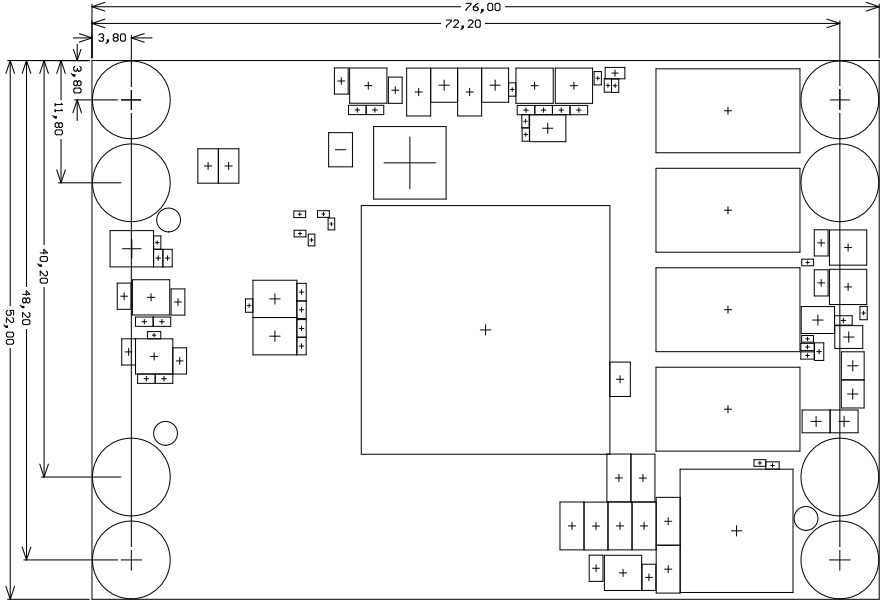
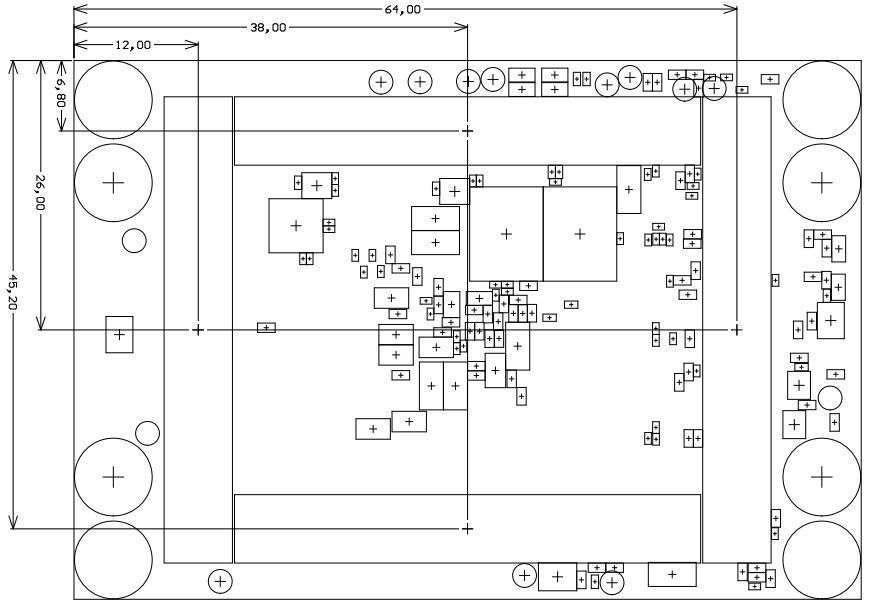
| Date | Revision | Notes | Link to PCN | Documentation Link |
|---|---|---|---|---|
| 2019-03-18 | 03 |
| TE0803 Product Change Notifications | TE0803-03 |
| 2018-07-19 | 02 |
| TE0803 Product Change Notifications | TE0803-02 |
| 2016-12-23 | 01 | First production release | - | TE0803-01 |
Hardware revision number is written on the PCB board together with the module model number separated by the dash.
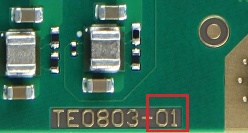
| Date | Revision | Contributors | Description |
|---|---|---|---|
| |||
| 22-02-25 | v.50 | John Hartfiel |
|
| 22-02-08 | v.46 | John Hartfiel |
|
| 2021-05-17 | v.41 | John Hartfiel |
|
| 2021-03-11 | v.40 | John Hartfiel |
|
| 2019-07-15 | v.36 | John Hartfiel |
|
| 2019-07-02 | v.35 | John Hartfiel |
|
| 2019-06-19 | v.33 | John Hartfiel |
|
2018-08-20 | v.29 | John Hartfiel |
|
2018-08-06 | v.28 | John Hartfiel |
|
| 2017-11-13 | v.23 | Ali Naseri |
|
2017-11-13 | v.19 | John Hartfiel |
|
| 2017-10-19 | v.18 | John Hartfiel |
|
| 2017-08-15 | v.17 | Vitali Tsiukala |
|
2017-08-07 | v.14 | Jan Kumann |
|
2017-05-17 | V.4 | Ali Naseri | Current TRM release. |
| 2017-05-10 | v.1 | Ali Naseri | Initial document. |